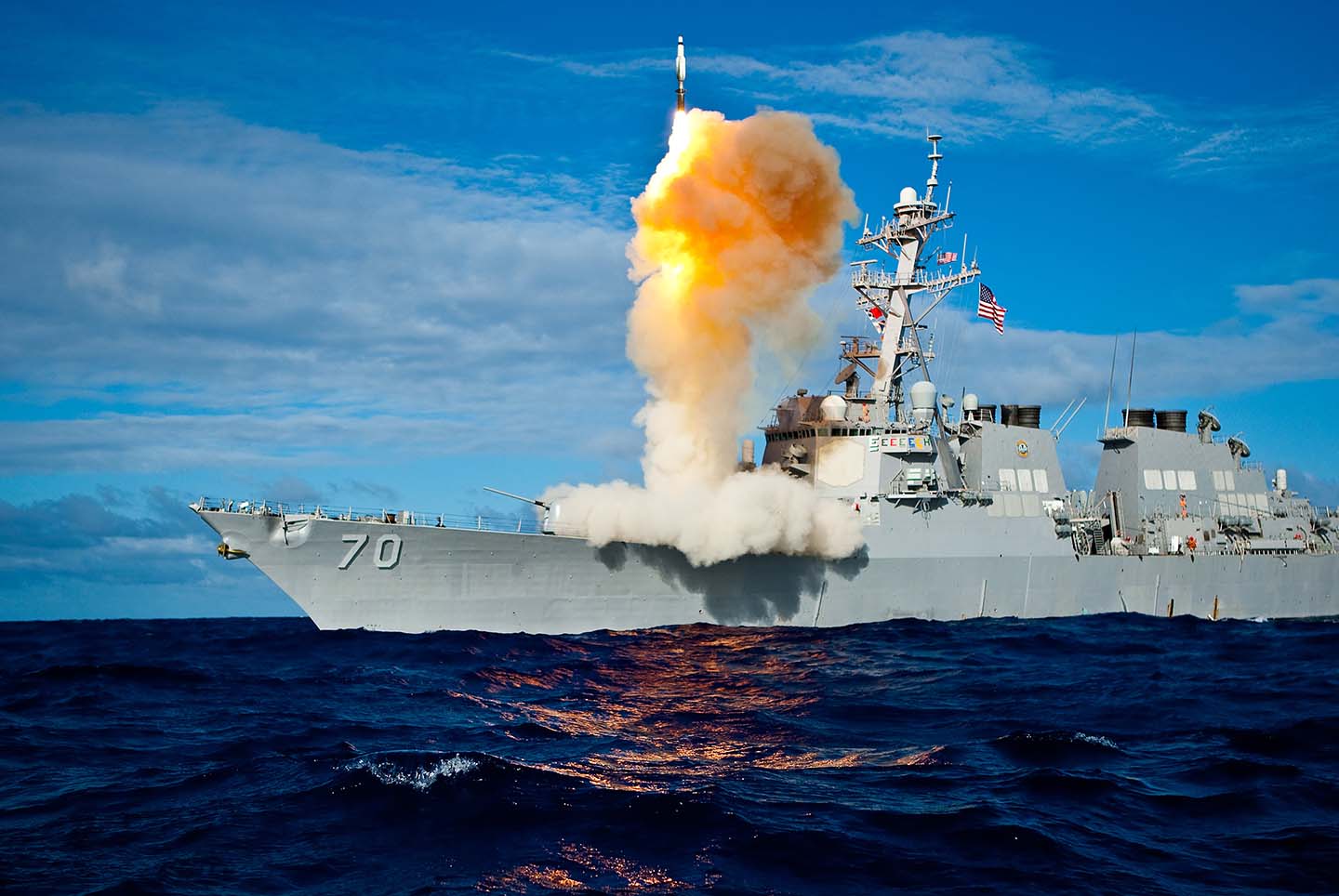Press Release
Missile Defense Weapon System Tests Showcase APL Expertise
Fri, 07/31/2009 - 08:56
Both the current and upcoming versions of the Aegis Ballistic Missile Defense weapon system, used to detect, track and target missile threats, was put to the test in two same-day exercises conducted with APL’s assistance. The tests were conducted yesterday at the Pacific Missile Range Facility (PMRF) off Kauai’s coastline in Hawaii.
The first exercise, referred to as “Stellar Avenger,” focused on intercepting a ballistic missile target in its midcourse phase of flight with the current weapon system (Aegis BMD 3.6.1) and an SM-3 Block IA missile. During the exercise, a successful intercept was achieved — the 19th intercept for the program.
As technical direction agent for the Aegis BMD program, The Johns Hopkins University Applied Physics Laboratory (APL), in Laurel, Md., supported pre-mission planning and analysis for the missile, target and radar; and mission execution, including creating missile and target trajectories, as well as the mission scenario.
A “kill assessment” risk-reduction test was also conducted using auxiliary equipment related to the next version of the weapon system (Aegis BMD 4.0.1), under development, which will be deployed in 2011.
“This system looks at debris at intercept and can determine whether or not a target was successfully destroyed, so we don’t have to rely solely on either missile or radar data to determine success,” says APL’s Bill Hughes, who serves as the government’s Aegis BMD project officer. APL has been a significant contributor in concept and technology development for the kill assessment system.
Tracking Exercise
Flight Test Exercise ‘06 (FTX-06) — a new series of exercises to track differing targets with the new Aegis BMD 4.0.1 weapon system being developed — kicked off during this test campaign, successfully completing the first at-sea demo of the new weapon system following its installation aboard USS Lake Erie (CG 70). With its modified signal processor, the new version adds improved detection, tracking and discrimination of more complex target scenes.
Although no missile was fired for this test, crews aboard USS Lake Erie successfully tracked and performed a simulated intercept of a non-separating target that was launched from PMRF.
“We’ve been heavily involved in requirements and concept development for the new weapon system,” says Mike Forehand, APL’s programmatic lead for the weapon system. These efforts include weapon system modeling and simulation development, target discrimination, and development of the radar-related aspects of the track exercise.
MDA and the Navy cooperatively manage the Aegis BMD Program. Raytheon Missile Systems, Tucson, Ariz., is the prime contractor for the development of the SM-3. Lockheed Martin Maritime Systems and Sensors, Moorestown, N.J., manages the development of the Aegis BMD Weapon System installed in Aegis cruisers and destroyers.
For more information about APL, visit www.jhuapl.edu. For images and/or information about Stellar Avenger or FTX-06, visit www.mda.mil.
